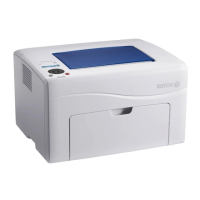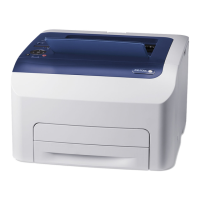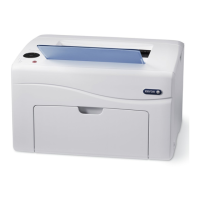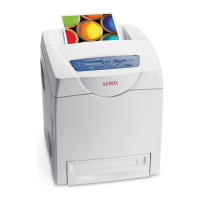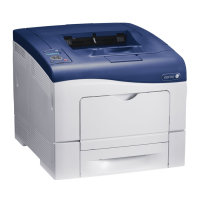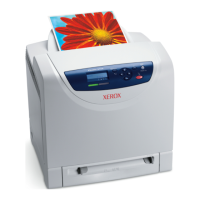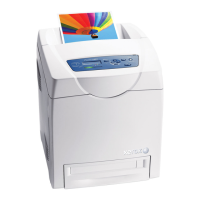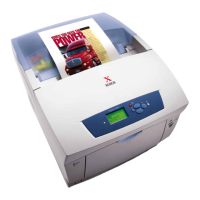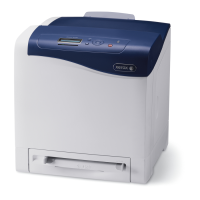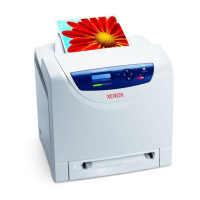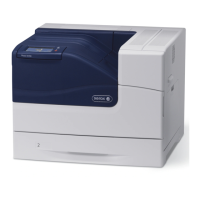2-6 Xerox Internal Use Only Phaser 6000/6010 and WC 6015 MFP
Theory of Operation
Exposure
The Exposure process forms an invisible electrostatic latent image on the
negatively charged drum surface by illuminating it with the LEDs (Light Emitting
Diodes). This process is performed in parallel for Yellow, Magenta, Cyan, and Black
colors.
The printers uses a LED Print Head (LPH) for exposure. The LPH is made up of
numerous LEDs that are lined up in the fast scan direction.
The LPH has 57 SLEDs (Self-Scanning Light Emitting Diodes), and each SLED has
256 dots of luminous points. The result is 14592 luminous dots that are capable of
producing a high quality image of 1200 dpi in the fast scan direction.
The LEDs are lit in one line units based on the print data (image data) that is sent
from the printer controller.
The lenses then focus the light onto the drum surface. The LED is only lit for the
parts where the one line is made up of pixels (small dots that form characters or
images). When parts of the drum surface are exposed, they become conductive
and the negative charges flow towards the positive side to cancel out the positive
charges, reducing the potential on the drum surface. These sections with lowered
surface potential form the electrostatic latent image.
s6000-056
Drum
Exposure
Point
Illuminating point
SLED
LPH
Aggregated
Optical
System
